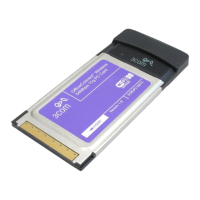40 CHAPTER 3: CONFIGURING THE ACCESS POINT
Configuring UAM
Universal Access Method (UAM) is a client authentication method that is
typically used in Internet cafes, hot spots, and similar sites that provide
Internet access.
Any wireless station attempting to connect to the Internet using a Web
browser is directed to a logon page. On this logon page, the user must
enter a user name and password, which are authenticated by a RADIUS
server.
If authentication is successful, the user is granted access to the Internet. If
the user is not authenticated, the Access Point blocks user access to the
Internet and displays another Web page (login failure URL) that provides
information on how to pay for and obtain Internet access. This login
failure Web page is typically on your Web server.
When UAM is enabled and configured, HTTP (TCP, port 80) connections
are checked. UAM only works on HTTP connections; other types of traffic
are ignored.
To use UAM, you need the RADIUS server for client authentication, and
configure the UAM settings. There are two types of UAM authentication
that you can use:
■ Internal authentication – Uses the Web page that is built into the
Access Point
■ External authentication – Uses a customized Web page on your Web
server. If you want to provide more information to the user (for
example, how to pay for and obtain Internet access), use external
Client Login Name Displays the name used for client Login on the RADIUS
server. This name must be created on the RADIUS
server.
Shared Key Used for the client login on the RADIUS server. If
visible, type the same key value as the one on the
RADIUS server.
WEP Key The WEP key used to encrypt data before it is sent to
the RADIUS server. If visible, type the desired key value
in HEX, and ensure the RADIUS server has the same
key value.
WEP Key Index Click the preferred key index. You can use any value,
as long as it matches the value on the RADIUS server.
Table 10 Options for RADIUS-based MAC Authentication
Option Description

